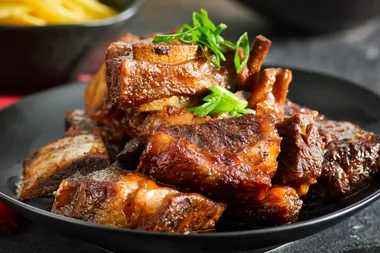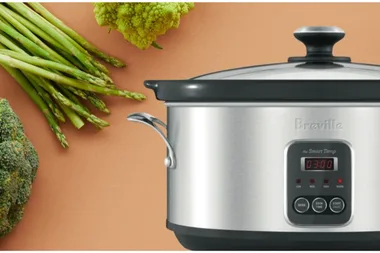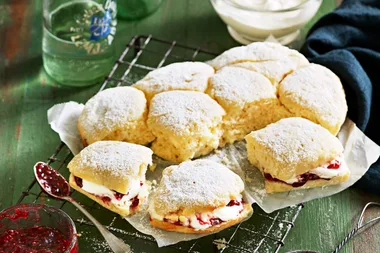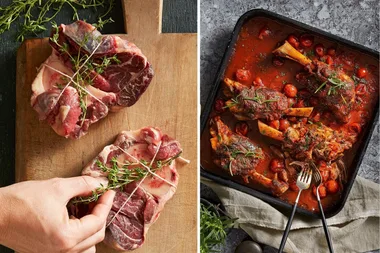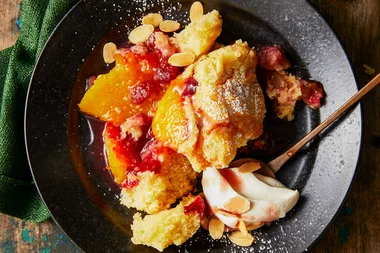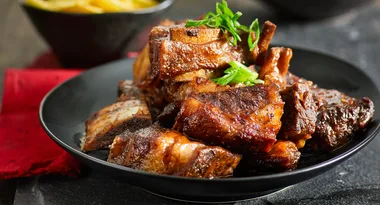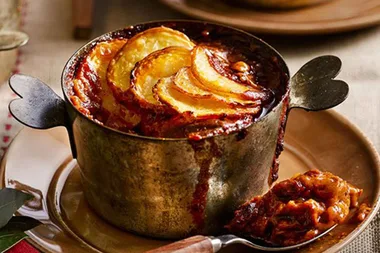Attempted slow cooking in the past only to be disappointed by the results? These slow cooking tips will help you fall in love with the low and slow method that will turn even the toughest cuts of meat into melt-in-your-mouth deliciousness. Whether you’re batch cooking, catering for a big family feast, or just trying fit all of the things – work, life, raising kids, staying fit, and meal prepping – into just 24 hours, slow cooking can be an absolute life-saver.
Most recipes require about 15 minutes of prep and the rest pretty much takes care of itself. Plus, tucking into a plate of slow-cooked food is just like receiving a warm embrace from someone you love! Here, we cover how to fix runny sauce, the best cuts of meat to use and how to get the most out of your slow cooker.

1. Set everything up the night before
Make slow cooking a little faster by getting organised the night before.
- Read through the recipe so you’ll be familiar with what you need to do.
- Take your slow cooker out of the cupboard and set it up (switched off) on your kitchen bench. Ensure it’s on a flat surface and a safe distance from other kitchen appliances, walls, splashbacks, water sources, as well as any young children’s reach.
- If you’re not using a slow cooker, take out a roasting pan or a large heavy-based ovenproof saucepan from your cupboard or storage area.
- Cut up the vegetables you’ll need and store them in airtight containers in the fridge. Keep in mind that potatoes, fennel and apple will discolour once cut, so it’s best to store them whole until you need to cut them the following morning.
- If the recipe requires it, cut up your meat. You can also brown off your meat the night before if you’re really pushed for time. Just make sure you keep the pan juices. For best results, we recommend browning off meat in the morning, just before you switch on your slow cooker or heat up your pan.
- Gather together ingredients such as stock, tomato paste and pantry staples, as well as any utensils you’ll need, for example tongs or wooden spoons.

2. Use cheaper cuts of meat
The slow cooker is no place for your best filet mignon! When slow cooking, it’s actually better to opt for cheaper cuts of meat, including beef shanks, lamb shanks or whole chicken. These cuts are rich in connective tissues which become tender during a low, long and slow cook, creating that ‘melt-in-your-mouth’ effect. They’re also less likely to become dry during the extended cook time. Here are some of the best cuts of meat to work with when you’re slow cooking.
Beef
- Chuck beef is a cut from around the shoulder and neck. It can be bought as steaks or as large pieces, which are perfect to slow cook whole and pull apart.
- Gravy beef is also known as beef shin or shank. It is a boneless cut that comes from the low part of the shin.

Veal
- Diced veal shoulder is often referred to as goulash veal. You could use chuck instead or try beef short ribs, topside and corned silverside.
Lamb
- Lamb forequarter chops and whole boneless lamb legs can be good choices for slow cooking.
- Lamb shanks are sold both as pictured (right) or ‘Frenched’, which means fat and gristle have been neatly trimmed away from the bone. If you purchase them as pictured, the meat will shrink and expose the bone during cooking anyway.
- Lamb shoulder is sold boneless and rolled, as well as with the bone in. Trim away a little of the excess fat, as it won’t render down completely during cooking.
Chicken
- Drumsticks are affordable and kid-friendly, as the bones are large and easy to handle, and the meat is full of flavour.
- Whole chickens need minimal preparation and are inexpensive when purchased fresh, and even more so when purchased frozen.
- Skinless chicken thigh fillets and chicken Marylands are worth slow cooking, too.
Pork
- American-style pork ribs are fall-apart delicious.
- Pork shoulders are sold whole boneless or with the bone in. Cook the shoulder with the fat on or off.

3. Thaw before you cook
Make sure any frozen meat and poultry you plan to use in your casserole is completely thawed before you start cooking with it. This will ensure the meat cooks evenly and avoids the meat from sitting in the temperature danger zone (between 5 and 60 degrees celsius) for a prolonged period of time.
4. Get to know your machine
If you’re using a slow cooker, it’s important to read the instruction manual thoroughly before cooking to avoid disappointment. Each machine has its own settings and quirks, so it pays to familiarise yourself with all of the settings to ensure the best end result. Facebook groups (there are plenty of general and machine-specific groups to join) are also a great source of guidance and support when trying out a new recipe.
5. Browning is important
Don’t rush the initial step of browning meat, poultry or vegies. This process ensures your dish is rich in colour and, most importantly, flavour.
Brown the meat in small batches, as this ensures meat sears, not stews.

6. Runny sauce? Try this
If you find that your slow cooker creations come out a little runny, commit this sauce-thickening slurry to memory:
- Combine 1 Tbsp cornflour and 2 Tbsp water in a small bowl to form a smooth paste. Add to a boiling casserole or strained sauce a little at a time, stirring constantly until thickened to your liking.
7. Love your leftovers
Make pies: Slow-cooked leftovers make the perfect pie filling. Spoon them into ovenproof dishes – small for individual serves or big to share – and cover with your choice of topper. These recipes below make enough to cover four 1 cup-capacity pie dishes.
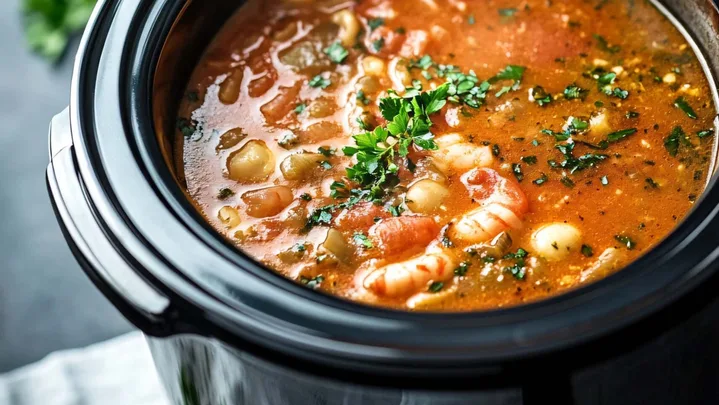 Adobe Stock
Adobe Stock
